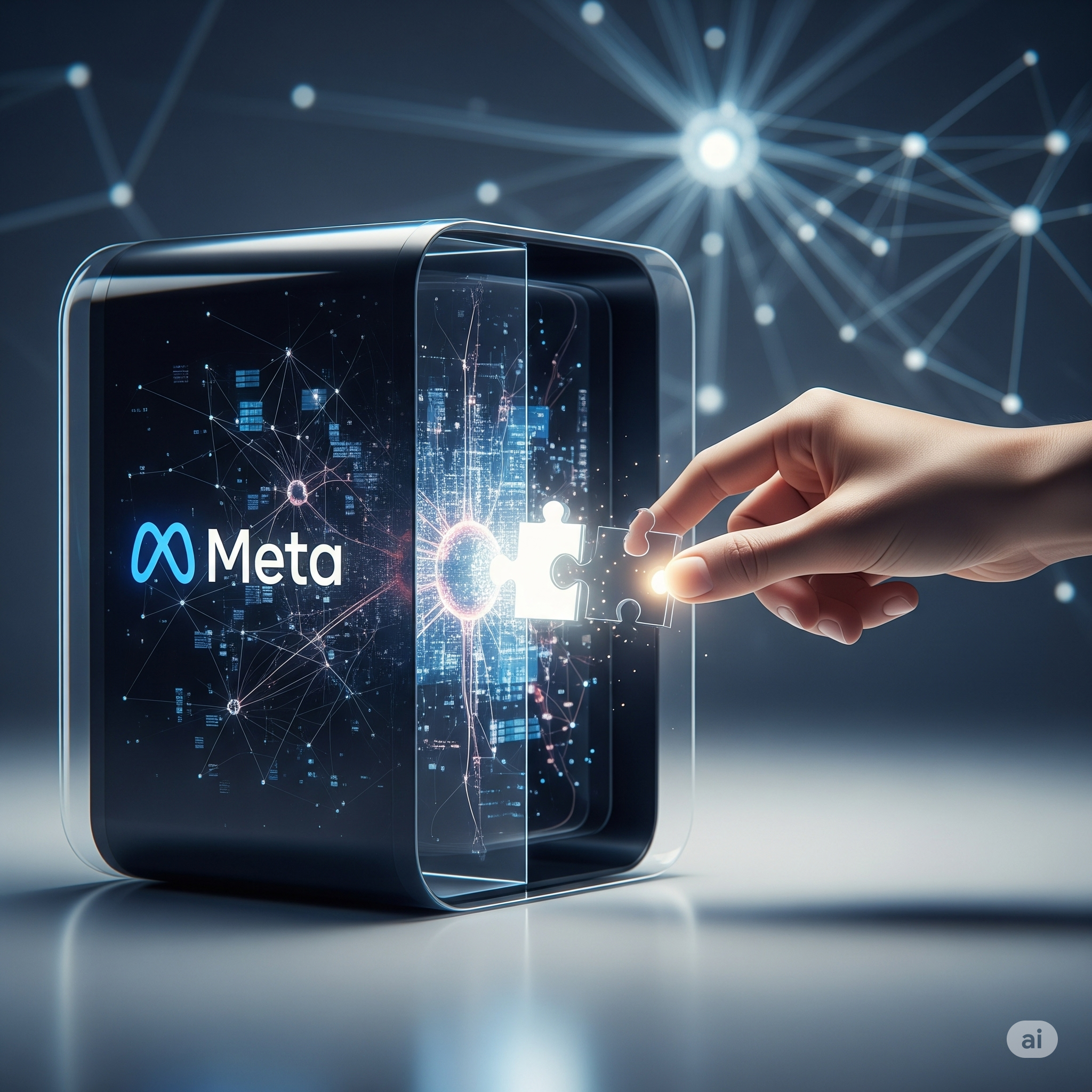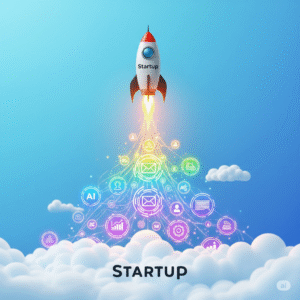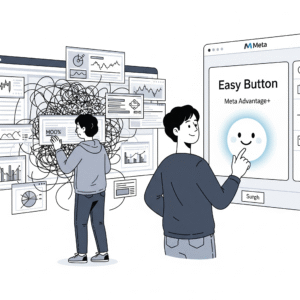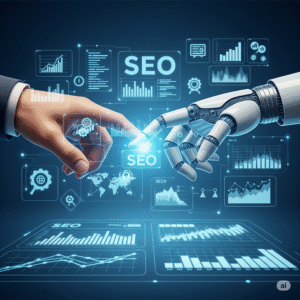It’s a bright Tuesday morning here on July 29, 2025, and as I sit here in my office in Rishikesh, watching the eternal, predictable flow of the Ganges, I can’t help but contrast it with the chaotic, opaque world of digital marketing. For advertisers today, handing your budget over to Meta feels less like navigating a river and more like getting into a self-driving car with blacked-out windows. You tell it where you want to go, you hear the engine running, but you have no idea what route it’s taking. This feeling has a name: the “black box” problem. And it’s the single biggest source of anxiety for modern marketers.
The question I get asked most often is, “How do I beat the Meta Ads algorithm?” The short answer is: you don’t. You don’t “beat” a system that processes trillions of data points every second. The better question is, “How do I work with it?” For over 15 years, I’ve watched this platform evolve from a simple targeting tool to a complex AI powerhouse. The key to success today isn’t trying to outsmart the machine, but understanding its language. This guide will demystify the Meta Ads algorithm, peel back the layers of the black box, and show you how to become an indispensable co-pilot to the most powerful advertising AI on the planet.
The “Black Box” Feeling: Why the Meta Ads Algorithm Seems So Mysterious
That sense of handing over control is unsettling, but it’s the direct result of Meta’s strategic push towards automation, primarily through its Advantage+ suite. The system is designed to be a black box to a certain extent. Why? Because the sheer scale of its operation is beyond human comprehension. The modern Meta ad delivery system isn’t following a simple set of A/B testing rules; it’s running a continuous, multi-variable auction for every single ad impression in real-time.
Understanding machine learning in ads is key here. The algorithm is constantly learning from user behavior, ad performance, and feedback signals across its entire network. It predicts who is most likely to take the action you want, at what time, and on which placement (Feed, Reels, Stories, etc.). Because these predictions are based on complex patterns across billions of users, Meta can’t provide a simple “if-then” explanation for why your ad was shown to a specific person. This move from manual levers to automated intelligence is why it feels like you’ve lost control, but it’s also why the system, when used correctly, is more powerful than ever.
Peeking Inside: The Core Components of the Meta Ads Algorithm
While we can’t see the entire source code, we know the fundamental pillars that make up the Meta Ads algorithm. Understanding these components helps you diagnose problems and provide the AI with better inputs.
H3: The Ad Auction: More Than Just the Highest Bid
Every time there’s an opportunity to show an ad, an auction happens in milliseconds. The winner isn’t just the advertiser with the highest bid. Instead, Meta calculates a “Total Value” for each ad. The simplified formula looks something like this:
Total Value = (Advertiser Bid) x (Estimated Action Rate) + (Ad Quality)
- Advertiser Bid: How much you’re willing to pay.
- Estimated Action Rate: The algorithm’s prediction of how likely a specific user is to take the action you’re optimizing for (e.g., click, purchase, sign up). This is the AI’s secret sauce.
- Ad Quality: A measure of your ad’s relevance and engagement, including feedback from users who have seen it. Low-quality, spammy ads get penalized.
H3: The Role of Machine Learning in the Meta Ads Algorithm
The “Estimated Action Rate” is where the machine learning truly shines. The AI builds predictive models based on a user’s past behavior, the behavior of similar users, and the context of the ad itself. This is how Facebook AI works at its core. It’s constantly learning and refining these predictions. When your campaign is in the “learning phase,” the Meta ad delivery system is spending your budget to gather enough data (typically 50 conversions) to build a confident predictive model for your specific objective and creative.
H3: The Pacing System: How the Meta Ads Algorithm Spends Your Budget
The algorithm’s pacing system tries to get you the best results over the lifetime of your campaign. It aims to spend your budget smoothly rather than blowing it all in the first few hours. This is why you might see performance fluctuate during the day. The pacing system takes your budget and target goals into account to bid more competitively in auctions where it predicts a higher chance of success, and less in others. This AI ad optimization ensures you get the most value out of your budget.
Real-Life Examples: How the Meta Ads Algorithm Interprets Your Actions
Case Study 1: “Ganga Valley Organics” – A Local Rishikesh Brand
A local Rishikesh-based e-commerce store selling organic teas and spices was using manual targeting, focusing on interests like “yoga” and “organic food.” Their results were inconsistent.
- Problem: Limited reach and fluctuating sales with manual targeting.
- AI Solution: They switched to an Advantage+ Shopping Campaign, providing their pixel data and best-performing creative. They trusted the Meta Ads algorithm to find their audience.
- Outcome: The algorithm analyzed the purchasing patterns of their existing customers and discovered powerful new audience segments they had missed—specifically, international wellness tourists who had previously visited Rishikesh and corporate wellness programs in Delhi and Mumbai. The AI understood the context of their customers better than they did, leading to a 70% increase in sales from new customers.
Case Study 2: “Global Tech Solutions” – B2B Lead Generation
A B2B software company was targeting very specific job titles for a whitepaper download, resulting in extremely high lead costs.
- Problem: High Cost-Per-Lead (CPL) due to overly narrow targeting.
- AI Solution: They simplified their campaign structure, broad-targeting an entire country and using their best-performing ad copy and visuals. They focused on giving the algorithm a clear conversion signal (a completed lead form).
- Outcome: By removing the restrictive targeting, they allowed the Meta Ads algorithm to do its job. It identified users who exhibited behaviors similar to their existing leads, regardless of their stated job title. Their CPL dropped by 60%, and the quality of leads improved because the AI was optimizing for people who actually take action, not just those who fit a profile.
You’re the Co-Pilot: How to Influence the Meta Ads Algorithm
You can’t control the algorithm, but you can absolutely influence it. Think of yourself as a co-pilot. Your job is to provide clear instructions and high-quality fuel.
- Focus on High-Quality Inputs (Data): The algorithm’s learning is fueled by data. A properly configured Meta Pixel and Conversions API is non-negotiable. The cleaner and more robust your data, the better the AI’s predictions will be.
- Provide Excellent Creative (Fuel): Creative is your most powerful lever. The algorithm can find the right people, but it can’t make a boring ad compelling. Test different angles, hooks, and formats (especially video). As McKinsey notes, generative AI is revolutionizing creative production, allowing for rapid testing.
- Set Clear Objectives (Destination): Tell the AI exactly what you want. If you want sales, optimize for purchases. If you want leads, optimize for lead form completions. Vague objectives lead to vague results.
- Simplify Your Account Structure: Resist the temptation to create dozens of hyper-targeted ad sets. A simpler structure with fewer, larger campaigns gives the Meta Ads algorithm more data to learn from within a single campaign, leading to faster and more effective optimization.
External Tools to Enhance Your AI Ad Optimization
While Meta’s platform is the main event, several external tools can help you provide better inputs:
- Creative Ideation: ChatGPT is invaluable for brainstorming ad copy angles, headlines, and pain points.
- Business Intelligence: Use Power BI or Tableau to merge your ad data with your CRM data. This helps you analyze the true Lifetime Value (LTV) of customers acquired through different campaigns, giving you a clearer picture of profitability.
- Sentiment Analysis: Tools like MonkeyLearn can analyze the comments on your ads to gauge public sentiment, providing qualitative feedback on your creative.
- Automation & Integration: Zapier can connect Meta Lead Ads directly to your CRM, ensuring instant follow-up, a critical signal for the algorithm that your leads are valuable.
The Meta Ads algorithm is not an adversary. It’s a phenomenally powerful, logic-driven partner. It doesn’t have hunches or bad days. It simply follows the data and the instructions you provide. By shifting your mindset from trying to control it to learning how to guide it with clear goals, clean data, and compelling creative, you can turn the “black box” into your single greatest asset for growth.
The 15-Year Vet’s Guide to Meta Ads AI: What You Actually Need to Know in 2025
AI Marketing Automation for Startups: Fueling Early Growth
AI for Small Business: Leveling the Playing Field with Intelligent Tools



